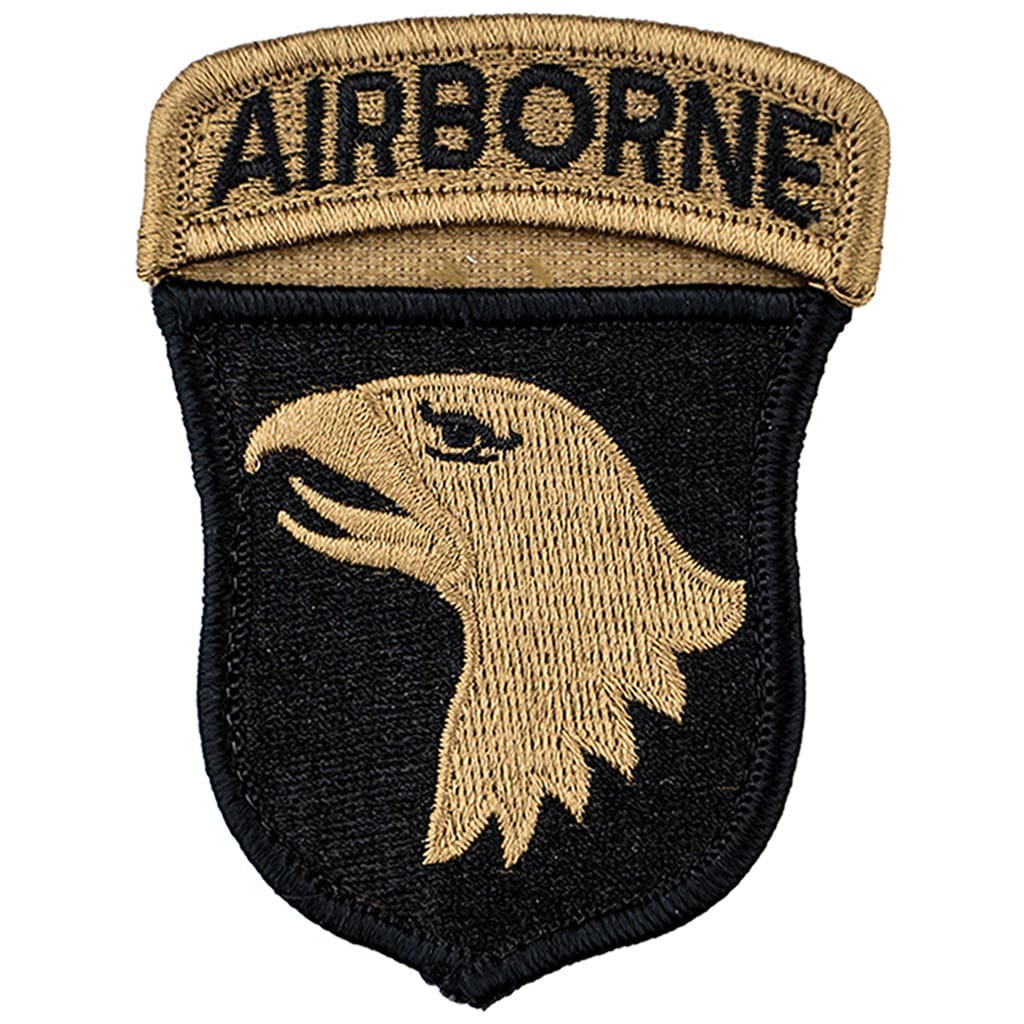The 101st Airborne Division patch, emblazoned with its iconic “Screaming Eagle,” is more than just an insignia. It’s a symbol etched in history, representing courage, sacrifice, and the unwavering spirit of American air assault. From the beaches of Normandy to the mountains of Afghanistan, this patch has witnessed pivotal moments that have shaped global conflicts. This list article delves into the rich history, symbolism, and collector’s value of this iconic emblem, offering a comprehensive guide for history buffs, military enthusiasts, and anyone captivated by the legacy of the Screaming Eagles.
The History of the 101st: A Rendezvous with Destiny
The 101st Airborne Division’s journey began in 1918, but its airborne destiny took flight in 1942. This transformation marked a pivotal moment in military history, as the division became one of the first American units to embrace the daring tactics of airborne warfare. Let’s explore some key moments in their storied history:
-
World War II: The 101st rapidly earned a reputation for valor and tenacity during World War II. Their involvement in crucial operations, including the D-Day landings (Operation Overlord), Operation Market Garden, and the grueling defense of Bastogne during the Battle of the Bulge, cemented their place in military history.
-
Vietnam War: The division continued to demonstrate its adaptability and combat prowess in the Vietnam War, engaging in numerous campaigns and battles that tested their limits. Their role in this conflict further solidified their reputation as a highly effective fighting force. You can read more about the Vietnam war veteran and controversial figure Bo Gritz.
-
Post-Cold War Era: The 101st remained a key player in global affairs even after the Cold War. Their involvement in humanitarian missions in Rwanda and Somalia, as well as deployments to Iraq, Afghanistan (2015-2016), and Syria (2018-2021 as part of Operation Inherent Resolve) demonstrated their enduring commitment to serving their country.
Decoding the Screaming Eagle: Symbolism and Variations
The screaming eagle, perched proudly on a blue shield, is steeped in symbolism. It’s believed the design drew inspiration from “Old Abe,” the war eagle mascot of the 8th Wisconsin Volunteer Infantry Regiment during the Civil War. While ongoing research explores this connection, it suggests a powerful link between the 101st and a legacy of courage dating back to the 1860s.
Here’s a breakdown of the patch’s key elements and variations:
-
The Eagle: Symbolizes aggression, strength, and the division’s ability to strike swiftly and decisively. Some historians suggest that the open beak, giving the impression of a “scream,” might be a symbolic echo of Old Abe’s cries during Civil War battles.
-
The Shield: Traditionally represents protection, defense, and the unwavering resolve of the soldiers who wear the patch.
-
Color Variations: The original full-color patch featured a vibrant white eagle against a blue background. During the Vietnam War, a subdued olive-drab “combat patch” emerged, a practical adaptation to the jungle environment. These color variations can help collectors identify the era a particular patch originates from.
-
WWII Variations: For a deeper dive into the diverse patch variations used during World War II, the “Eagle Patch Corner” on 101airborneww2.com is an invaluable resource for collectors and historians.
-
Modern Variations: While the core design remains consistent, slight variations in the eagle’s shape, wing angle, and the shade of blue may exist in modern iterations. These subtleties can often be used to pinpoint the patch’s production era.
Collecting 101st Airborne Division Patches: A Curator’s Guide
For collectors, these patches are more than just collectibles; they’re tangible pieces of history. Here are some essential tips for navigating the world of 101st Airborne patch collecting:
-
Authenticity: Pay close attention to details like stitching quality, color accuracy, and any official markings to ensure you’re acquiring genuine patches. Tight, even stitching often suggests higher quality, and correct colors are vital for authenticity. Fading might indicate age but can also be a sign of reproduction.
-
Rarity and Value: Several factors influence a patch’s value, including its historical period, specific variations, condition, and any unique features. Patches from specific eras or campaigns can be particularly sought after.
-
Resources: Connect with online communities, forums, and specialized websites dedicated to military memorabilia and patch collecting. These platforms offer valuable insights, authentication assistance, and opportunities to connect with fellow enthusiasts.
The 101st in Popular Culture: From Battlefield to Big Screen
The 101st Airborne Division’s heroism and iconic imagery have resonated beyond the battlefield and into popular culture. Their exploits have been depicted in films like “A Bridge Too Far” (1977), which portrays their role in Operation Market Garden. While their presence in “Saving Private Ryan” (1998) is often debated, the film highlights the bravery of airborne troops during World War II. These portrayals contribute to the enduring legacy of the Screaming Eagles.
Why is the 101st So Famous? A Legacy of Grit and Glory
The fame of the 101st Airborne Division is a complex tapestry woven from threads of history, daring exploits, and an enduring symbol. Their pivotal role in World War II, especially during D-Day and the Battle of the Bulge, established them as a force to be reckoned with. The striking “Screaming Eagle” patch became an emblem of American military might, further amplifying their renown. Their evolution from paratroopers to air assault pioneers demonstrated their adaptability, while their consistent performance in combat solidified their reputation for reliability and effectiveness.
Their rigorous training and high standards attract top-tier recruits, perpetuating a cycle of excellence. These factors, combined with their powerful symbolism and cultural impact, likely contribute to their enduring fame and respect.
Is the 101st Airborne Considered Elite? A Complex Question
While not officially classified as Special Operations Forces, the 101st’s capabilities and combat record place them in a unique category. Their intense training, rapid deployment capabilities, and consistent performance distinguish them from conventional units. Some experts believe their historical achievements and ongoing contributions to national defense justify their consideration as one of the top units within the U.S. Army. The debate continues, but their accomplishments speak volumes.
This expanded and enriched article provides a more comprehensive exploration of the 101st Airborne Division patch and the legendary unit it represents. The structured format, combined with historical details, symbolic interpretations, and collector’s insights, offers a more engaging and informative reading experience. It aims to be a valuable resource for anyone interested in delving into the history and legacy of the Screaming Eagles.
- Unveiling the Enigma: Mansoureh Khojasteh Bagherzadeh’s Public Appearances & Private Life in Iran - July 18, 2025
- Unveiling the Mystery: Mansoureh Khojasteh Bagherzadeh’s Husband: A Rare Glimpse into a Private Life - July 18, 2025
- Unveiling Masoud Khamenei’s Mother: Power, Influence, and Iran’s Future - July 18, 2025
















